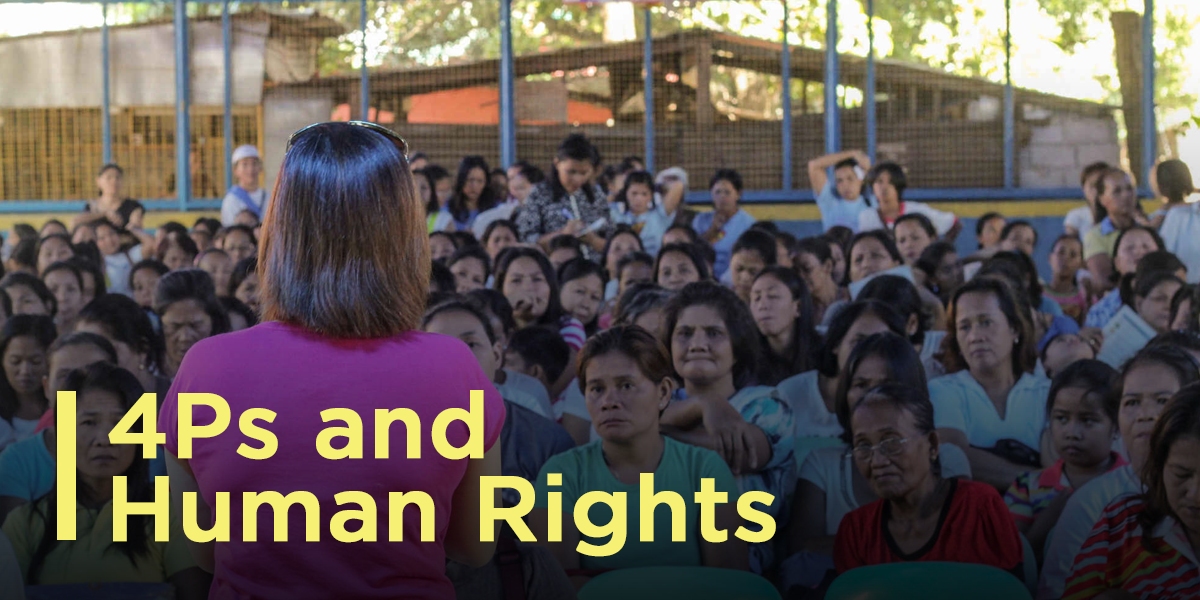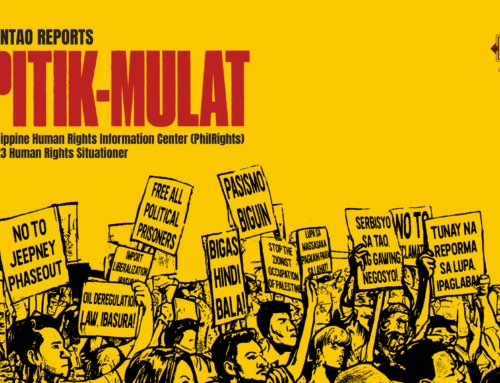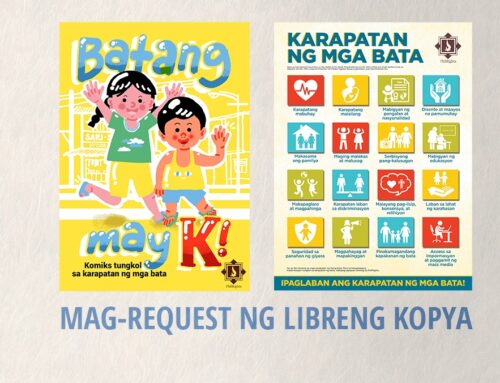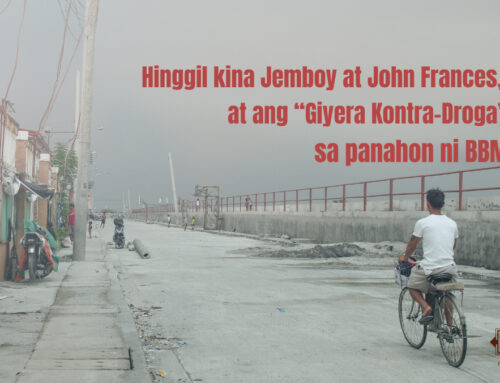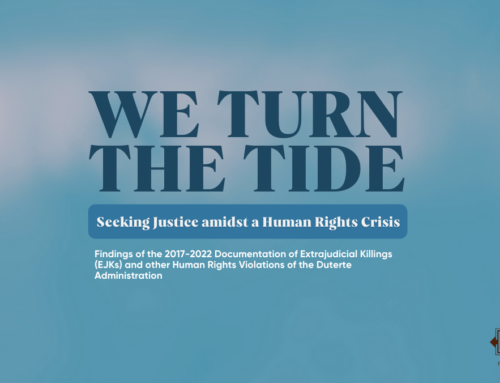by Isaac Linco
ABOUT THIS SERIES: It has been over 11 years since the inception of the Pantawid Pamilyang Pilipino Program (4Ps). This three-part series examines the ways it has or has not addressed the progressive realization of human rights of poor Filipinos, specifically their economic, social and cultural rights.
Part 3 describes the steps needed in order to optimize the strengths of the program and fill in implementation and knowledge gaps.
Part 3: Optimizing Strengths and Filling the Gaps in 4Ps implementation
A common theme among the studies examined for this series is the need for improvements in the targeting mechanisms employed in selecting beneficiaries. The latest composition of 4Ps beneficiaries is 65% poor and 35% non-poor families, according to the World Bank review in 2015, revealing a weakness in reaching the extremely poor. Also, as indicative of the general issues faced by this program, the 2017 COA report on the program recommended the suspension of any increase in 4Ps beneficiaries in the future until the DSWD has improved its internal systems and targeting mechanisms.
As a sustainability measure, stable jobs are needed by beneficiaries to ensure that they will be able to maintain the increased level of consumption of families. Improvements in the education and health indicators of the beneficiaries can also be maximized by actually improving the infrastructures for both the education and health sectors.
Sustainability can also be achieved by strengthening opportunities for empowering and organizing beneficiaries. Furthermore, the convergence of 4Ps with other anti-poverty programs must be intensified in order to provide a more holistic approach to improve the lives of the beneficiaries and their communities.
It can also be argued that 4Ps does not contribute to solving structural and redistribution reforms in the Philippines in any meaningful way.
As one evaluation study notes, the program’s homogenous approach targeting poor households reveal the exclusionary aspects of this program. As a result, the overall impact of 4Ps when it comes to reducing national poverty and inequalities is still diminutive relative to the overall poverty figures and income gaps.
Also, more research is needed to test the claims of the impact of the 4Ps to the macroeconomic situation and to the marginalized sectors. We also need to see the progress of children beneficiaries who graduated from the program to evaluate the effectiveness of the investments in their human capital. Finally, this program must also be seen as complementary to other development programs and not as a central poverty reduction strategy.
On Human Rights
While 4Ps’ design aligns with the overall State obligation to ensure the progressive realization of citizens’ human rights, this does not mean that human rights practice is meaningfully mainstreamed in this program.
Studies reviewed for this series have not surfaced any initiatives to use 4Ps as an opportunity to increase the awareness of the beneficiaries on their basic rights—clearly a missed opportunity.
Mainstreaming human rights in the program may contribute to the empowerment of the beneficiaries, who will be aware of their rights and responsibilities as citizens. Opportunities for rights-claiming of the beneficiaries can also be improved, such as the maximization of grievance mechanisms and creating more spaces for the active participation of the beneficiaries beyond the traditional program operations.
A holistic rights-based approach to governance will show that the 4Ps is only part of what should be a whole gamut of development programs available. Aside from the education and health needs of the poor families, their immediate and long-term needs also ought to be supported adequately. Key here is ensuring that the government’s development agenda harmonizes all existing interventions so that inefficiencies are minimized and positive impacts reach those who need them the most.
Admittedly, popularizing human rights within the 4Ps program is an enormous endeavor, particularly in the need to capacitate its implementors. Still, simple changes can be put in place as in changing the common term ‘beneficiaries’ to ‘partners’ in order to emphasize the roles of the member-households beyond the set conditionalities. The DSWD will need the support of the academe and civil society in improving the 4Ps according to human rights standards.
4Ps must be subjected to public scrutiny to ensure that public resources will be effectively spent
On Sustainable Development
While 4Ps serves to achieve the MGDs, this program needs to be updated based on the new Sustainable Development Goals (SDGs). The design of 4Ps can contribute to the attainment of the following Sustainable Development Goals: 1) Poverty eradication, 2) Zero hunger, 3) Good health and well-being, and 4) Quality education.
Aligning the program with SDGs means thinking about the changing modalities on the factors affecting poverty and connecting 4Ps with other programs that address the following: climate change adaptation, women empowerment, decent work, and environmental sustainability, among others. This alignment with SGDs will also ensure compliance with international human rights standards.
Identified knowledge gaps
With the growing body of research on 4Ps, the full picture of the program’s strengths and weaknesses is slowly emerging.
That said, knowledge gaps persist. These are urgent and essential opportunities for social development practitioners who would be interested in contributing to the improvement of the program and its impacts. More studies to measure the impact of the 4Ps are needed from various perspectives. Some of the suggested topics include the following:
- Monitoring the families and children who graduated from the program;
- Identify factors that hinder or facilitate the success of 4Ps,
- Studies that focus on the Modified Conditional Cash Transfer and how it supports marginalized groups;
- In-depth documentation of the leakages in the targeting mechanisms of the 4Ps;
- Comparison of outcomes of the 4Ps with other cash transfer programs from other countries; and
- Action researches on initiatives to mainstream Human Rights and Sustainable Development with the 4Ps.
With the advancement of legislative measures to institutionalize 4Ps, the program is several steps closer to becoming a permanent government program. Even before this happens, 4Ps must be subjected to public scrutiny to ensure that public resources will be effectively spent. This is a call to everyone especially the academe, civil society and human rights advocates to influence public policy towards the creation of programs and services that truly address the needs of the people and create opportunities for genuine development.



